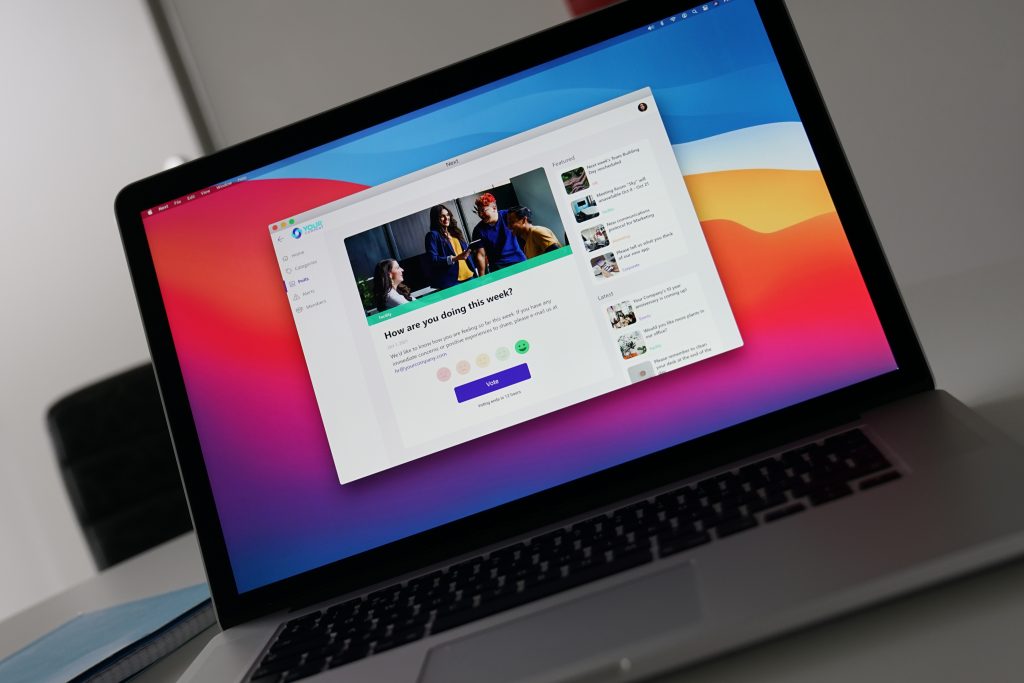Five Golden Rules to Keep in Mind When Conducting Employee Pulse Surveys
Estimated reading time: 5 minutes
In our previous blogs on pulse surveys, we explained how to collect employee feedback with a communication platform and pulse surveys. However, pulse surveys are only useful if they make employees feel that they are being listened to, and their feedback leads to actions and changes. These are five golden rules to keep in mind when conducting employee pulse surveys.
- Include the right target audience
- Choose the right moment
- Choose between anonymous and confidential
- Consider survey length
- Ask actionable questions
1. Include the right target audience
Are you collecting feedback at a particular time – for example, when something is about to change or has changed within the organization? This change will probably not impact all employees; some changes will primarily have local consequences.
Before conducting it, define specific target audiences you wish to include in your pulse survey. When you’ve defined your target audiences – based on department, location, country, et cetera – you can ensure only employees who have something useful to say about the pulse survey’s subject are participating in it. This way, you can turn pulse survey outcomes into actionable insights and genuinely improve the situation for the employees it affects.
2. Choose the right moment
If you want actionable results from your pulse surveys, ensure your surveys align with the employee journey. An employee who is new to the company will have a different opinion about certain topics than their peers who have been employed for years. Adjust your pulse survey questions accordingly.
Asking for the opinion of your staff at different moments in the employee journey can be very useful. Especially since their opinion will also change at different times, choose the right moment in the employee journey to conduct your pulse survey. This means you don’t ask someone who has been with the organization for two years how their onboarding process was. Someone who has been with the organization for only six months will, undoubtedly, have more useful things to say about this.

3. Choose between anonymous and confidential
There are different kinds of surveys: anonymous, confidential, and non-anonymous surveys. A non-anonymous survey can be useful to gather answers quickly – for example, when you want to know who will be attending the corporate Christmas dinner. However, it would probably be more useful to send out a quick poll for these occasions: you ask one question, give staff a couple of choices, and you will have the answers within moments.
In an anonymous survey, responses are anonymous, and nobody in the entire organization can discover the identity behind the survey responses. This may be desirable at some times and has several significant benefits. Employees won’t fear retribution from management, which will lead to more honest answers and more survey participants.
However, it will also create a sense of security that can inhibit meaningful insights from the data. That is why a confidential survey can be the best choice. Confidential surveys typically prevent a manager or peers from finding out someone’s identity, but not, for example, HR. This makes it more about protecting someone’s privacy than protecting their identity. When the respondent’s answers generate a highly individualized response, anonymity will not impede decisive action.
4. Consider survey length
It can be very tempting to try and get the most out of a feedback opportunity. However, you will probably end up with the opposite. The length of a survey can keep employees from completing it, which will leave you where you started.
A rule of thumb is frequency versus length: a survey that runs only once a year, such as the annual employee engagement survey, can be lengthier. However, you can conduct a short, one-question pulse survey more often to track the organization’s sentiment over time.
5. Ask actionable questions
Only send out pulse surveys if you genuinely use them to improve or measure something. If you don’t intend to do anything with the answers, don’t ask the questions. Employees will notice quickly if their answers don’t lead to any improvement or tangible results. This will lead them to avoid answering any surveys in the future. Therefore, don’t conduct a survey only to satisfy your curiosity.
Feedback should be implemented immediately, and surveys should be about topics that are also relevant to employees. Only then will your surveys lead to actionable insights and overall improvements for your organization.
Would you like to get started with employee pulse surveys? Get in touch with our consultants; they are happy to discuss the possibilities for your organization or show you everything Netpresenter has to offer in a free 30-minute demo. Or download the free self assessment to measure the levels of engagement in your organization.

